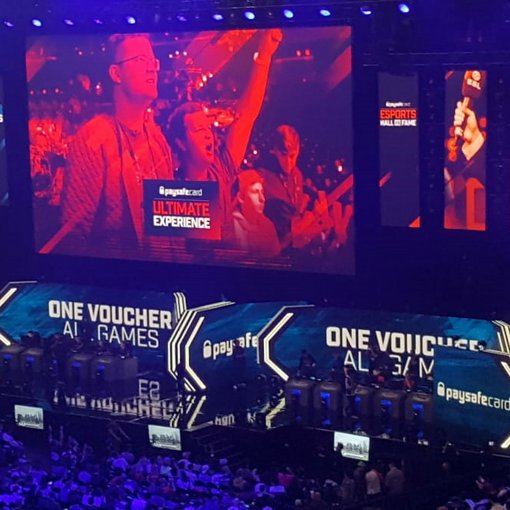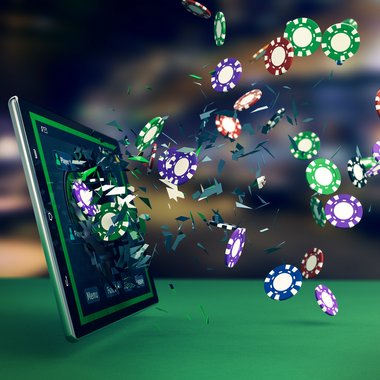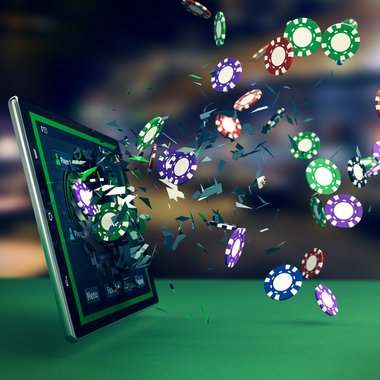
- Four minutes read
eSports and payments are on target in the US market
Our key takeaways from last month's ESL One New York event.
Over the final weekend of last month, New York City hosted the East Coast’s biggest eSports event, ESL One New York. Held for a fourth-straight year at Brooklyn’s Barclays Center, the home of the Brooklyn Nets, the 2019 contest boasted competitive video gaming to rival an NBA game – and which is now just as big a business.
Playing Counter Strike: Global Offensive (CS:GO), four teams of five players plus a coach – the Danish Astralis; the local Evil Geniuses; the Berlin-based G2 Esports, which is also sponsored by paysafecard; and North America’s Team Liquid – battled for supremacy in the semi-finals. The Brooklyn crowd became even more amped-up for the following day’s Grand Final, which pitted North Americans against Europeans for the lion’s share of a $200,000 prize pool.
The prize money suggests just one of the takeaways from an event that allows us to take the pulse of the US eSports market:
1. eSports are big business in the US – and getting bigger
The crowded Barclays Center – with attendance exceeding 6,500 on both days, according to the ESL – suggests that eSports has become a mainstream sporting event. The ESL estimated that ticket sales were around 30% higher this year compared to 2018, implying that competitive video gaming’s US popularity continues to grow.
Fans’ engagement was also indistinguishable from an NBA or NFL game. The home crowd cheered and chanted “U-S-A” in support of local favorites Team Liquid in the semi-finals and then switched to the predominantly American Evil Geniuses for the Grand Final following Liquid’s elimination.
The audience’s elation was tangible when Evil Geniuses triumphed to claim half of the prize pool. Although only a fraction of the record $33.3 million in prizes for The International 2019, a Dota2 championship held in Shanghai in August, it’s a mistake to assume that Asia isn’t being challenged by the US industry. Indeed, the richest non-Dota2 purse was $15.3 million for July’s Fortnite World Cup, which was also held in New York.
Overall, the rapidly growing North American market is already forecast to exceed the more established Asian space. NewZoo predicts that industry revenue for North America will exceed $409 million in 2019 compared to $210.3 million in China.
And the future looks to be even brighter, with eSports set to be more popular than most traditional sports in the near future. Activate predicts that by 2021, more Americans will watch eSports (84 million) than Major League baseball (79 million) or the NBA (63 million).
2. Alternative payments are a good fit for US eSports fans
Who are these millions of eSports fans? Surveying the Barclays Center during the Grand Final, it’s evident that the audience trends younger and the gender balance skews towards males.
According to NewZoo’s 2018 report, around a third (31%) of US fans are women, while the majority (69%) are men. A significant proportion of male fans are still teenagers (10%), while the vast majority are Gen Z and Millennials (62% are aged 20-34), with less than a third (28%) over 35.
The young bias of US eSports fans suggests that they are a natural audience for alternative payments. Teenage fans in particular have less access to mainstream financial products such as credit cards for both online and offline purchases. To support financial inclusion, prepaid online payment solutions such as paysafecard, online cash replacement solutions and even mobile wallets like Apple Pay can allow digitally-savvy fans to buy eSports merchandise safely and securely – both online and off. As an alternative payment method, paysafecard in particular is also notable for its simplicity. US consumers simply purchase the 16-digit voucher in denominations of $10, $25, $50 or even $100 at a convenience store or retailer, and then input the PIN online to make a purchase with a merchant.
More broadly, our Q2 2019 consumer research backs up the US Gen Z demographic’s strong relationship with alternative payment methods online. Indeed, close to a third (29%) have used a prepaid PIN such as paysafecard, while even more (31%) have used a cash replacement product online. Given unprecedentedly high smartphone penetration among this age-group, mobile wallet usage is also significant. Forty percent of Gen Z have used one, according to our data.
As American eSports’ growth continues unabated, alternative payments will almost certainly play an even bigger role in its future.
3. The future: eSports is at a crossroads…
Aside from strong growth, what else does the future hold for American eSports? The question was much discussed by the eSports organizations, industry insiders and journalists we met with at the Barclays Center.
Many shared the view that eSports is currently facing a quandary, given its growth trajectory. Will it remain a huge industry that is nonetheless an entertainment niche? Or will eSports, as its name implies, join the mainstream sporting world and ultimately become part of the world’s largest competitive event, the Olympic Games?
Given that Tokyo 2020 is less than 10 months away, the question is understandable. While the International Olympic Committee (IOC) have been in official talks with the eSports industry, no progress has been made about including professional video gaming events. The Olympic body has reservations about eSports’ fragmented governing organizations as well as the violence in games such as CS:GO.
Nonetheless, unofficially, eSports and the Olympics are converging. Tokyo will feature an Intel-sponsored eSports side event in June, with players competing in Street Fighter V and Rocket League contests. Beyond that, Paris 2024 has officially opened the door to ‘literal’ eSports contests – competitions involving virtual versions of traditional sports such as sailing.
Whether ‘eSailing’ navigates an Olympic path for eSports remains to be seen. What is certain – and what ESL One New York proved even more than in previous editions – is that American eSports is bigger than ever. And the future looks bright for the industry – and the alternative payments space.




